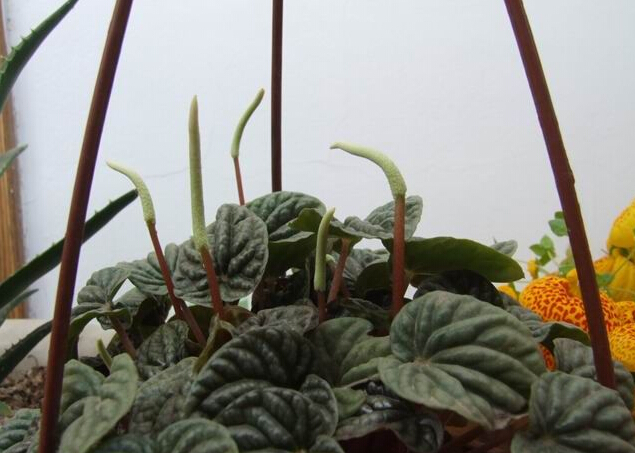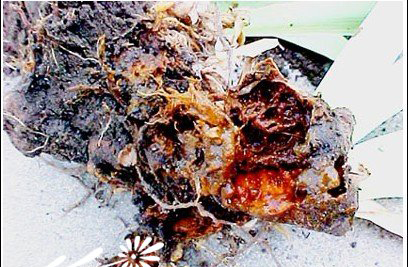Control of Root Rot of Flowers in Family hydroponic Culture
In recent years, hydroponic flowers are popular. According to the oxygen supply route, hydroponic flowers can be divided into two kinds: one is to dissolve oxygen in nutrient solution, and the other is to absorb oxygen directly from the air. For hydroponic flowers, root rot is mainly caused by insufficient dissolved oxygen in nutrient solution. The results showed that when the dissolved oxygen content in rhizosphere of most terrestrial plants was below 2.8ppm, the root system was deficient in oxygen absorption; when the dissolved oxygen content in rhizosphere was below 1.5ppm, the root system was difficult to absorb oxygen, resulting in difficulty in growth; when the dissolved oxygen content in rhizosphere was below 0.5ppm, the root system stopped growing or died. Trace amounts of phosphorus, nitrogen and other nutrients in water will promote synthesis reactions and increase green plants, especially algae. Eutrophication occurs when the rate of increase exceeds the rate of degradation. Algal death produces a musty odor and accelerates root decay. In order to prevent and reduce the occurrence of flower root rot, the following points must be paid attention to in daily flower management: First, do not put flowers on the balcony for a long time to avoid direct sunlight, which causes the flowers to breathe faster, resulting in the decrease of dissolved oxygen in the nutrient solution due to the increase of oxygen consumption by roots; Second, do not use too much ammonium nitrogen in the nutrient solution, and pay attention to reducing the concentration of nutrient solution to increase the concentration of oxygen in the nutrient solution. Third, when selecting containers, it is necessary to choose the nutrient solution and the air contact area as large as possible to effectively increase the dissolved oxygen rate; fourth, it is necessary to appropriately increase the number of times to replace the nutrient solution, especially in hot summer, it is best to replace the nutrient solution once a day to improve dissolved oxygen. If the root rot of hydroponic flowers has occurred, the treatment methods are: 1. Waterfall the nutrient solution with a miniature submersible pump to rapidly increase the dissolved oxygen in the nutrient solution so that the roots can obtain sufficient oxygen. 2, immediately remove the rotten roots to prevent further spread of decay.

The static hydroponic flowers commonly introduced in the market for the prevention and control of root rot of family hydroponic flowers, according to the oxygen supply route of the roots, one is to use dissolved oxygen in the nutrient solution; the other is to receive oxygen directly from the air. The former is that the tip of the root system is immersed in the nutrient solution and naturally dissolves oxygen through the contact between the liquid surface and the air; the latter is the upper end of the root system, that is, the partial root system is exposed to the air and directly inhales oxygen. The part of flower root exposed to air is directly exposed to oxygen concentration of 2.3× 10000ppm (oxygen volume percentage in air is about 21%); when the tip of flower root is planted in water, the oxygen concentration in rhizosphere decreases sharply and is affected by saturated dissolved oxygen in water (
- Prev

Culture methods and matters needing attention of Capsicum rugosa
Adapt to the environment well, even if the soil quality, water quality is not good, can still grow well, suitable for planting in the background. Because its roots are scattered in the bottom sand, considerable space needs to be made for it to grow. Propagate by new buds from older parts. In the domestic horticulture industry
- Next

Control methods of bacterial soft rot of Iris
Bacterial soft rot is one of the most common diseases of Iris, which often occurs in both corm and rhizome Iris. The following combined with years of breeding experience, to talk about the prevention and control of Iris soft rot. The pathogen of Iris soft rot is bacteria, and two species are known at present.
Related
- Fuxing push coffee new agricultural production and marketing class: lack of small-scale processing plants
- Jujube rice field leisure farm deep ploughing Yilan for five years to create a space for organic food and play
- Nongyu Farm-A trial of organic papaya for brave women with advanced technology
- Four points for attention in the prevention and control of diseases and insect pests of edible fungi
- How to add nutrient solution to Edible Fungi
- Is there any good way to control edible fungus mites?
- Open Inoculation Technology of Edible Fungi
- Is there any clever way to use fertilizer for edible fungus in winter?
- What agents are used to kill the pathogens of edible fungi in the mushroom shed?
- Rapid drying of Edible Fungi

